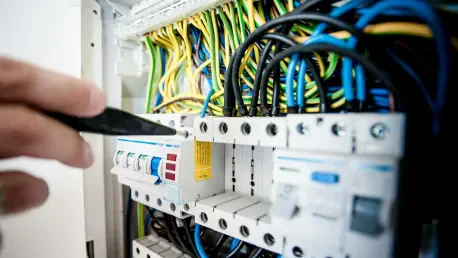I’m thrilled to sit down with Vladislav Zaimov, a seasoned telecommunications specialist with a deep understanding of enterprise telecommunications and the critical aspects of securing vulnerable networks. Today, we’re diving into an innovative project at the Pyhäsalmi mine in Finland, known as the Callio FUTUREmine project. Vladislav will shed light on the groundbreaking collaboration between Nokia and Boldyn Networks to deploy a private 5G network nearly a mile underground. Our conversation explores the goals of this initiative, the cutting-edge technology powering it, the significance of its depth, and the transformative potential of autonomous equipment testing in such a challenging environment.
How did the Callio FUTUREmine project at the Pyhäsalmi mine come about, and what are its primary objectives?
The Callio FUTUREmine project is a fascinating endeavor aimed at transforming the Pyhäsalmi mine in Finland into a digital testbed for the mining industry. It kicked off in 2023 and is set to run through the end of the year. The main goal is to create an environment where cutting-edge technologies, like private 5G networks, can be tested in real-world, extreme conditions. This project seeks to push the boundaries of what’s possible in mining by focusing on automation, safety, and efficiency through advanced connectivity solutions. It’s about laying the groundwork for the future of industrial operations in challenging settings like deep underground mines.
What makes the depth of this private network deployment so noteworthy?
The depth is truly remarkable because the network is deployed nearly a mile, or about 1.5 kilometers, underground. In the European context, this is likely the deepest private network setup in a mining environment. This matters because operating at such depths poses unique challenges—signal penetration, environmental hazards, and maintaining reliable connectivity are all incredibly tough. Achieving seamless coverage at this level demonstrates the robustness of the technology and opens up possibilities for digital transformation in some of the most inaccessible workplaces on Earth.
Can you walk us through the technology driving this private network?
Absolutely. The network leverages Nokia’s Modular Private Wireless solution, which is designed for industrial-grade reliability. It includes Nokia radios paired with a 5G standalone core, often referred to as 5G SA. This setup is critical because 5G SA offers a fully independent architecture that doesn’t rely on legacy 4G systems, enabling ultra-low latency and high bandwidth. These features are essential for real-time applications like remote equipment operation in a mine, where even a millisecond of delay can be costly or dangerous. It’s a tailored solution for harsh, demanding environments.
How did the partnership between Nokia and Boldyn Networks come together for this project?
The collaboration has an interesting backstory. It started in early 2023 when a unit focused on private networks, which was initially under Cellnex, began working with Nokia on this deployment. Later that year, Boldyn Networks acquired that business, stepping into the project seamlessly. This transition brought Boldyn’s expertise in private networking into play alongside Nokia’s technological prowess. Together, they’ve built a synergy that’s crucial for tackling the unique challenges of a deep underground deployment like this one.
What are the operational advantages of having a 5G network in such an extreme underground setting?
The benefits are game-changing. First, the 5G network delivers ultra-low latency and high bandwidth, which means data travels almost instantaneously with massive capacity. In a mining environment, this allows for real-time monitoring and control of operations. Second, the network provides seamless coverage across the entire underground site—no blind spots, just constant connectivity. This is vital for safety and efficiency, ensuring that workers and equipment are always linked to central systems, even a mile below the surface. It’s a foundation for modernizing mining operations.
Can you tell us more about the testing of autonomous equipment being conducted in this project?
Certainly. One of the exciting aspects of this testbed is the focus on semi-autonomous machinery. The project involves equipment from a company specializing in mining tech, which is being tested to validate the network’s responsiveness. The idea is to ensure that the 5G network can support safe and efficient remote operation of these machines. This testing is crucial because it proves whether the connectivity can handle the split-second decisions needed for automation in a high-stakes environment like a deep mine.
Why is testing Level 4 autonomous driving in this mining testbed considered a significant step forward?
Level 4 autonomous driving refers to a high level of automation where equipment can operate without human intervention under specific conditions. Testing this in a mining environment is significant because it represents a leap toward fully automated operations underground. Mines are hazardous and complex, so proving that reliable wireless connectivity can support such advanced autonomy is a big deal. It’s about reducing human risk, increasing precision, and potentially revolutionizing how resources are extracted in the future.
What is your forecast for the future of private 5G networks in industrial settings like mining?
I’m very optimistic about the trajectory of private 5G networks in industrial applications. Projects like the one at Pyhäsalmi are just the beginning. I foresee these networks becoming the backbone of industries operating in remote or extreme environments, from mining to offshore energy. The ability to deliver secure, low-latency, high-capacity connectivity will drive automation and data-driven decision-making to new heights. Over the next decade, I expect widespread adoption, with tailored solutions becoming more affordable and accessible, ultimately transforming how we approach safety and productivity in these sectors.









